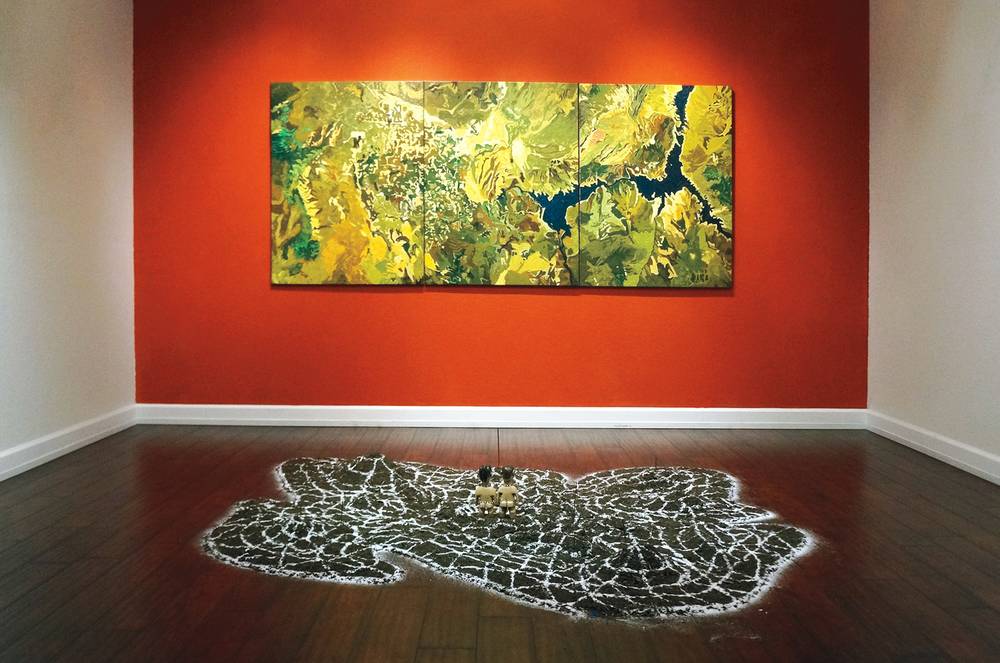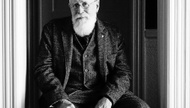Here on planet Earth we colonize, buy, sell, explore, destroy and inhabit. We own, believing it to mean something in this ephemeral world.
And so, when artist Jevijoe Vitug passed out sticks of incense to those seated around an island made of soil inside Left of Center Gallery, we partook. Guests speared the mountainous terrain with the burning sticks, claiming territory, some opting for a central valley plot, others insisting on an elevated ocean view.
Not only will the fragrant markers burn to ash, eradicating the claims to the land, the land itself will shift and erode through the course of Vitug’s exhibit. Vibrations from those walking around the room over the weeks will cause the clean lines (made of poured salt) that are mapping the territory to disperse, leaving borders and boundaries in question.
But such is the nature of this precarious world, as demonstrates Vitug’s Terra Infirma, which surveys the altered and evolving planet, a continuum of change, both natural and manmade, and its political and physical boundaries.
He’s created more than a dozen paintings of satellite maps and images of the world by pouring paint onto canvases on the ground. He then set the paintings vertically, allowing them to drip, creating rich layers of color that have a melting appearance and reflect Vitug’s idea of “excess” and “meltdowns,” the first causing the latter.
Some works include areas “restricted” to Americans, such as Siberia and Afghanistan. Some highlight the Philippines after typhoon Haiyan. Two paintings show the world map after the BP oil spill.
Though appearing to be beautiful abstract works, all are realistic renderings, skewed slightly by the dripping (except for a Lake Mead-based piece). “It’s all about excess,” Vitug says. “Something that’s building up until its accumulated enough to spill, whether it’s the environment, economic meltdown, the Cold War, climate change. Nothing is stable.”
With each painting, he says, there’s a correlating current issue: The Philippines-born artist was attaining American citizenship while painting Afghanistan and Siberia. His paintings based on an area in Kazakhstan and the Nevada Nuclear Test Site stem from his involvement in a program where students, professors, researchers and downwinders came together to study the effects of testing. The cross-cultural program served as an exchange between those in Las Vegas, including Patty Dominguez, whose family lived downwind, and residents of Kazakhstan near the Semipalatinsk Test Site.
In the works, Vitug says, he’s incorporating Jackson Pollock’s action method of painting and Piet Mondrian’s simplification of structure and reflection of the times. And the times here are ever-changing, which Vitug points out by naming the paintings “To be titled” with the current location—the Las Vegas Strip, Tacloban, Central Philippines—in parentheses.
Terra Infirma takes on the story of this planet by balancing the beautiful and the ugly, the accidental and the controlled, the serendipitous and the fluid in sobering, painterly works depicting place and time.
Terra Infirma Through March 29; Tuesday-Friday, noon to 5 p.m.; Saturday, 10 a.m.- 3 p.m. Left of Center Gallery, 2207 W. Gowan Road, 647-7378.







